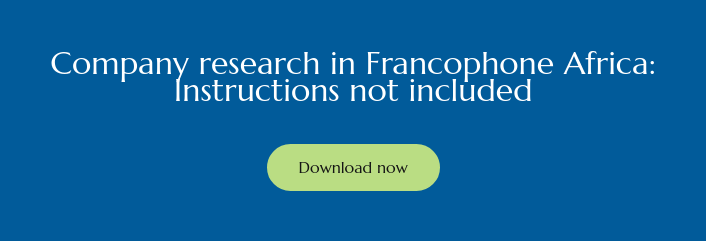Is Covid-19 accelerating Cameroon's digital transformation?
Read moreCameroon's banking sector - weathering the storms of COVID-19 and low oil prices
The size of Cameroon’s economy and its central location in the African continent make it an influential country in the Central Africa Economic and Monetary Community (CEMAC). Similarly, Cameroon’s banking industry tends to take a leading role at the Bank of Central Africa States (BEAC), which functions as the country’s apex monetary authority, as well as the region’s regulatory body COBAC (Banking Commission for Central Africa), both of which are structured and administered by its member states.1
Foreign-owned banks, domestic private banks, state-owned banks and microfinance banks all operate in the country, and, in addition to a traditional banking system, Islamic banking and e-banking services are becoming increasingly popular with consumers. The four biggest banks (Afriland First Bank, Banque International Du Cameroun Pour L’Epargne Et Le Credit, Ecobank and Société Générale Cameroon) account for over 60% of total bank assets.
In recent years, the banking industry has been one of the main drivers of the Cameroonian economy. In 2019 the country achieved economic growth of 3.7%, according to the International Monetary Fund (IMF) but, due to Covid-19, its growth is expected to contract by -1.2% this year. Growth is expected to pick up again in 2021 (to 4.1%) but that is dependent on the global pandemic recovery.²
According to the IMF, Cameroonian banks have CFA 5,300 billion (US$9bn) in assets which represents over 27% of Cameroon’s GDP and about 40% of CEMAC’s total banking assets.³ Banks remain profitable, and liquidity conditions have improved since 2017 thanks to the easing of the government’s liquidity constraints. However, forecasts indicate the sector is fragile and a risk of deterioration exists, due to a high number of non-performing loans, up from 12.9% of total loans in 2018 to 16.3% in August 2019 and are likely to rise further.4
Although Africa currently accounts for less than 0.5% of all coronavirus cases worldwide5, Cameroon’s reliance on natural resource exports such as petroleum and gas6 means it is vulnerable to global economic shocks and shutdowns. Consequently, banks in the country are likely to be vulnerable to weakening loan quality and foreign-currency liquidity shortages.
Credit rating agencies, such as Moody’s and S&P7,8, are lowering their growth forecasts in the banking sector based on projected growth contractions of 1% in 2020. Their assertion is that banks’ asset quality and earnings will be under pressure due to the widespread disruption to businesses because of social containment measures and the drop in oil prices.
So far Cameroon’s government has instituted policy measures, including lowering the base interest rate, reducing bank cash reserve ratios, agreeing bond buying programmes and offering debt moratorium for banks, in the hope of reducing the risk to the economy during this challenging and largely unpredictable time. As a result, and thanks also to a significant level of unbanked Cameroonian citizens, the sector’s outlook remains positive.
Along with the top four banks, details of other commercial banks authorised by BEAC can be found on ClarifiedBy.com:
- Commercial Bank of Cameroon
- Societe Commerciale de Banque Cameroun
- Union Bank of Cameroon
- Standard Chartered Bank
- Citibank Cameroon PLC
- Societe Ecobank Cameroun SA
- National Financial Credit Bank SA
- Atlantic Bank Cameroon
- BGFI Bank Cameroon SA
- Banque Camerounaise des Petites et Moyennes Entreprises
Diligencia has recently extracted and curated a bulk dataset from the corporate registry of Cameroon, adding over 120,000 profiles to our online platform www.ClarifiedBy.com. Diligencia uses agile technology and human insight to extract unstructured data on companies in territories where public domain information is not readily available.
FOOTNOTES
- Cameroon, Central Africa Republic, Chad, Equatorial Guinea, Gabon and Guinea
- IMF
- Teles Relay
- Fitch Ratings
- Track Corona
- Worlds Top Exports
- Moodys
- S&P Global

